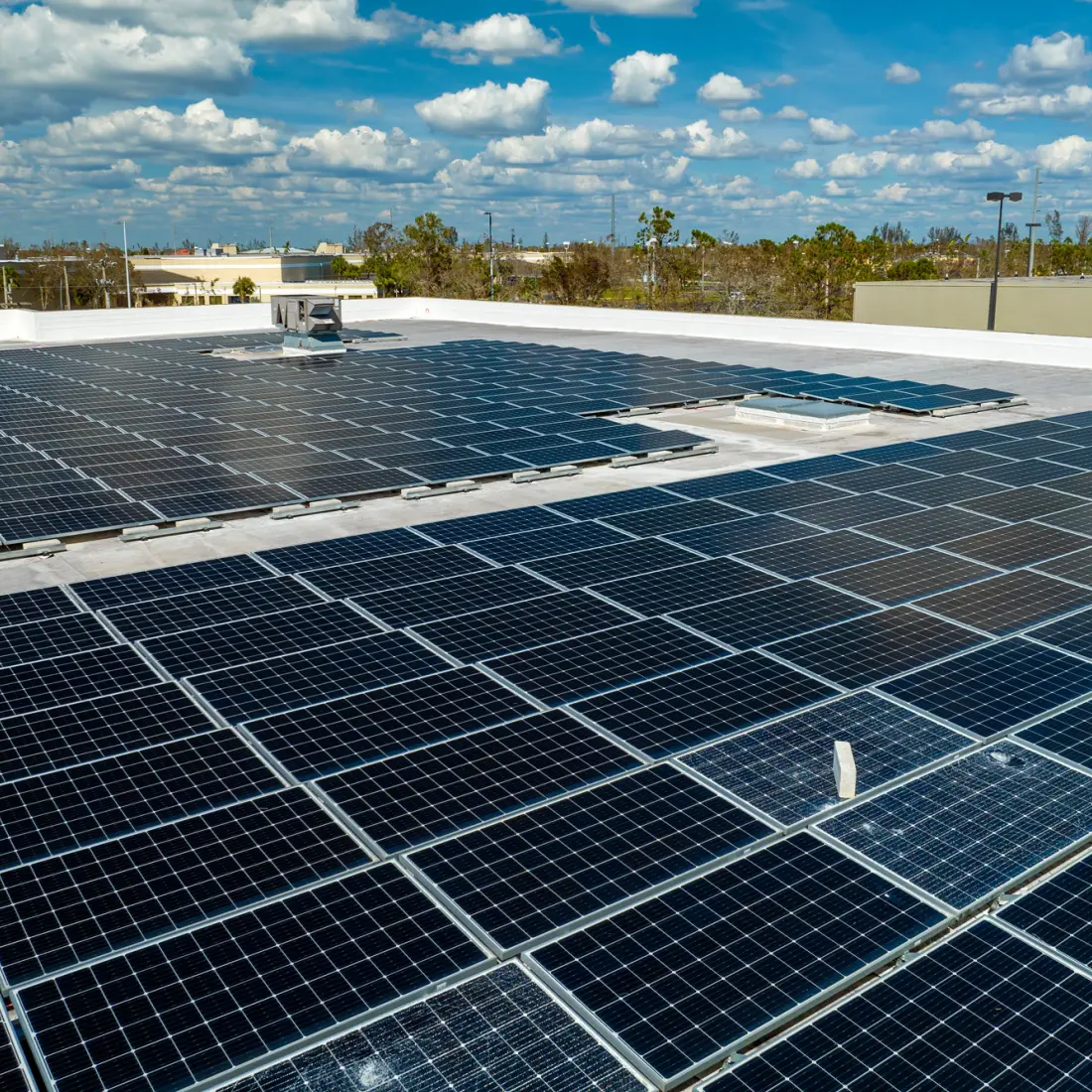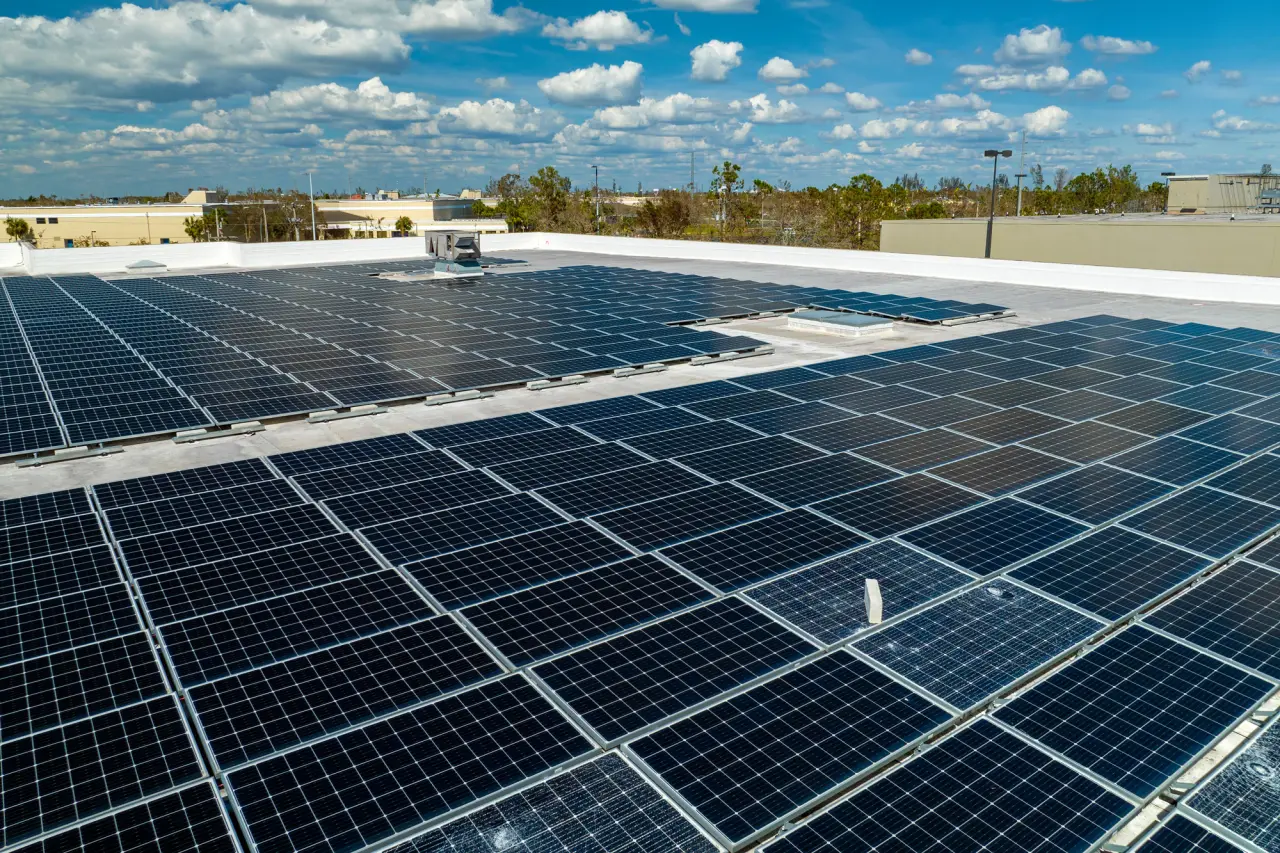What’s the difference between commercial solar design and utility-scale solar design?


Solar energy has grown exponentially in recent years. Since 2010, the solar industry has experienced a 24% annual growth rate on average. The increased adoption of photovoltaic (PV) panel technology is due to an increased interest in clean energy, the availability of tax credits and lower hardware and installation costs.
PV installations fall into several categories: residential, commercial and industrial, and utility. In a residential system, homeowners install roof-mounted solar panel systems to provide electricity for their houses. Many such systems connect to the grid, drawing power from it at night and feeding excess electricity from the panels back into it during the day.
Many people categorize commercial and industrial (C&I) arrays and utility-scale installations together because they are larger than home systems and often ground-mounted as opposed to roof-mounted. However, these two solar project types differ in their size, design, connections and support systems.
What is utility-scale solar?
Utility-scale solar energy projects, commonly called solar power plants or solar farms, are large installations of solar panels which are typically ground-mounted. Depending on the design, a utility-scale array may also feature mirrors or automated tracking features to maximize energy production.
Utility-scale solar plants typically produce between one and five megawatts (MW) of electricity, with each MW of capacity requiring about 10 acres of panels to generate. A solar plant connects to the larger electrical grid to supply power to homes and businesses across a wide area.
Cleanpower.org estimates that utility-scale solar contributes 80 GW of electricity to the grid in the United States, which is sufficient to power 18 million homes. While utility providers may construct and operate solar power plants, independent power producers (IPPs), non-profit community groups or local governments can also be owners of utility-scale solar plants. Sometimes, owners depend on third-party contractors to handle the technical aspects of designing, building and operating the array.
What are the benefits of utility-scale solar systems?
As a reliable source of renewable energy, solar farms create many benefits for the companies and the consumers that use their electricity. These advantages include lower electricity costs, enhanced environmental friendliness and the conservation of other resources.
Here’s a deeper look at the advantages of solar farms.
Affordable electricity
One of the reasons behind the growth of solar energy is that these systems have become more affordable in recent years. In 2010, utility-scale solar cost approximately $4.75 per watt to construct. Cheaper hardware, more efficient panels and better design and installation processes reduced that cost to less than $1 per watt by 2020.
Meanwhile, annual operation and maintenance (O&M) costs on average $23 per kilowatt (kW), which is $23,000 per MW. Without the need for additional fuel or resources, solar farms have low ongoing costs compared to other types of energy.
Utility providers can pass on these savings to consumers, who may enjoy cheaper overall energy bills. However, the amount of their savings will depend on local electricity prices and other factors.
Reduced emissions
Solar panels do not produce carbon dioxide or any other emissions when generating electricity. They do have a carbon footprint that comes from the manufacturing and installation process, but the carbon footprint of solar panels is 20 times less than that of a coal-fired power plant. In addition, operating a solar panel for three years will cancel out the carbon emissions produced during its production and installation.
As a zero-emissions energy source, solar plants contribute to lessening environmental impact on both global and local scales. They do not produce greenhouse gasses that contribute to global warming like fossil fuels do. On the local level, this ensures cleaner air, water and soil in areas surrounding the array. A cleaner environment reduces the risk of health dangers, such as respiratory illnesses, for the local population.
Water conservation
Traditional power plants rely heavily on water. For instance, coal plants use water to wash coal in preparation for use and as a cooling agent for their systems. Also, emissions from the plants, including dust and sludge, can contaminate local water sources, reducing the supply of clean water in the local area.
Natural gas plants use less water, but they still require it for cooling. According to the Energy Information Administration (EIA), each megawatt-hour (MWh) of electricity from natural gas requires the withdrawal of 2,803 gallons of water, while one MWh of coal-based electricity takes 19,185 gallons. This water use can be especially problematic in arid or drought-prone regions where water conservation is already challenging.
Solar energy does not require water for cooling or any other functions, so it has no impact on the water supply and does not cause any contamination. Switching to solar energy will reduce the consumption of water resources by reducing the need for water-intensive energy sources like coal or natural gas.
What is commercial solar?
Commercial solar systems are not designed to provide energy to residential utility customers. Instead, they produce electricity for commercial operations. For instance, a company could install a solar PV system to provide electricity for a factory, warehouse, office building or other commercial property.
Commercial solar systems vary in size, but can be quite large. A small office building, commercial property or retail store might use roof-mounted solar panels like the ones favored by residential customers. Roof systems are less costly and have a smaller land footprint than ground-mounted systems, but can be difficult to expand due to limited space.
Meanwhile, factories or corporate offices could construct ground-mounted arrays to provide power for energy-intensive operations. Ground-mounted solar panel systems can take up acres of land and can be expanded if there is space nearby. Because the arrays are often in open areas like fields, designers and installers have fewer challenges when orienting the panels for optimal energy production.

What are the benefits of commercial solar systems?
Commercial solar brings cost-saving benefits along with energy independence and economic resilience for businesses. Solar power can also bring other financial advantages and serve as evidence of a company’s commitment to sustainable, environmentally friendly operations.
Here’s a look at four of the biggest benefits of commercial solar system design.
Sustainability
Some of the world’s largest companies have highly publicized sustainability goals, such as significantly reducing emissions or achieving carbon neutrality. These efforts could be in response to the growing demand for sustainability among consumers. According to one study, 85% of shoppers say they have become more conscious of sustainability and made purchases guided by these principles.
Because of its ability to reduce carbon emissions and conserve natural resources, solar is an ideal sustainability solution for businesses. For instance, a manufacturer that relies on grid power produced by natural gas can install a one-acre ground-mounted solar system near its factory. The power from these panels will reduce carbon output by 175 to 198 metric tons per year.
Energy savings and carbon reductions from solar panels can help businesses quantify sustainability efforts and report them to consumers to bolster their image as a green company.
Energy independence
Companies that rely on grid power have to deal with two potential problems. First, electricity prices can fluctuate based on supply and demand, making it difficult to plan and budget, especially for companies with energy-intensive operations.
Second, company operations might stop altogether during power outages due to severe weather events. These blackouts are becoming more common. During the 2010s, for example, the instances of weather-related power outages increased by 78%.
Commercial solar can help deal with both these issues. It can reduce the reliance on grid power, lowering the impact of price changes made by utility companies and offsetting the risk of extended blackouts due to weather-related damage.
Reduced operating costs
35% of small businesses say that energy is one of their top three operating expenses. These costs may be higher in certain industries, such as manufacturing, which rely on energy-intensive tasks and large equipment.
After the initial investment, solar energy only requires basic maintenance, such as panel cleaning and repairs. Eventually, the system will recuperate the cost of installation with money saved on energy bills. After this payback period, the business enjoys essentially free energy, minus maintenance costs, for the lifespan of the panels. This can result in significant savings on operating costs.
Increased property values
Solar panels bring desirable influences to commercial property values. Buyers may be attracted to business properties with solar power due to benefits like lower operating costs and greater resilience in the face of power outages due to extreme weather brought on by climate change.
Property value increases can vary depending on location, size and other factors. Federal tax credits and other incentives can lower the cost of installation, increasing the return on investment.
What are the challenges of solar plant design?
Solar plant design can significantly affect output and, in the long term, profitability for both utility and commercial solar. Here are some of the challenges designers face as they try to create the most efficient and cost-effective solar farms possible.
Site selection is challenging because of factors like natural shading, uneven topography and distance from transmission infrastructure, which can complicate the design process. Also, utility-scale production requires 10 or more acres of land, which could increase costs and limit location options.
Upfront costs have decreased, but solar power still requires a significant investment. Designers need to ensure enough power will be produced to make the solar installation worth the investment.
Grid integration is another issue. In many regions, the grid is not able to accommodate intermittent power sources like solar without overloading.
These challenges can affect solar plant output, but they can usually be overcome with well-planned design, expert planning and quality installation.
Using solar design software for performance optimization
Utility-scale solar design software and commercial solar design software are used to optimize power generation by calculating factors like potential yield, optimal tilt and panel placement for the location and time of year.
Here’s a closer look at how software can aid the design process.
Yield estimation: Software can estimate and optimize energy yield based on system size, placement, solar irradiance and other variables. Yield can affect business planning, payback period and other considerations.
Demand forecasting: Software can calculate future energy needs based on current usage trends, weather patterns and other factors. It offers insights into the role the installation will play in the larger energy grid.
Energy optimization: The right program can optimize the design of a solar panel system, by finding the best tilt angle and placement and using tracking mechanisms to make automatic tilt adjustments based on season and time of day.
Automated maintenance: Software can automatically monitor performance to offer early warnings about issues like faulty wiring, dirty panels and other issues that hamper output.
Regardless of the type of solar system, the right design software can ensure maximum output and provide the best chance for a quick payback period and positive ROI.
Solar power is increasingly important for sustainability, resource conservation and the move to clean energy. With quality design and careful planning, utility-scale and commercial solar projects can bring these benefits to investors, companies and consumers.